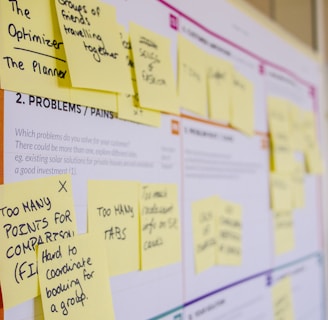

What Are The Tools and Techniques in Decision-Making?
The ability to make sound decisions impacts not only the operational efficiency of an organization but also its overall strategic direction. As managers are frequently faced with complex problems requiring timely solutions, it is essential to employ various tools and techniques that enhance decision-making processes.
Rational Decision-Making Model
The rational decision-making model is a structured approach that involves a series of logical steps aimed at identifying the best course of action.
The process typically includes the following stages:
Defining the problem
Gathering relevant information
Generating alternatives
Evaluating the alternatives, and
Selecting the optimal solution.
This model is particularly beneficial for decisions requiring thorough analysis and consideration of multiple factors. By following a systematic approach, managers can minimize biases and ensure that decisions are based on empirical evidence rather than intuition.
SWOT Analysis
SWOT analysis is a strategic planning tool that helps managers assess the Strengths, Weaknesses, Opportunities, and Threats related to a particular decision or organizational initiative. This technique enables decision-makers to identify internal and external factors that may influence the outcome of their choices. By doing this, managers can make informed decisions that leverage strengths and opportunities while mitigating weaknesses and threats.
Decision Matrix Analysis
Decision matrix analysis, also known as a prioritization matrix, is a quantitative approach used to evaluate and prioritize different options based on predefined criteria. This technique involves listing potential alternatives and assigning scores based on how well each option meets the criteria. By providing a visual representation of the options, managers can compare alternatives more effectively, facilitating clearer insights into the most viable solutions. This method is particularly useful when dealing with complex decisions involving multiple criteria.
Cost-Benefit Analysis
Cost-benefit analysis is an essential tool for evaluating the financial implications of a decision. By comparing the expected costs and benefits associated with various alternatives, managers can determine the economic feasibility of their choices. This technique allows decision-makers to assess not only the monetary implications but also the qualitative factors that may affect overall organizational performance. A thorough cost-benefit analysis can significantly enhance the likelihood of selecting a viable and sustainable option.
Group Decision-Making Techniques
Collaborative decision-making can be advantageous when managers seek diverse perspectives and expertise. Techniques such as brainstorming, the Delphi method, and nominal group technique can facilitate effective group decision-making. These methods encourage input from multiple stakeholders, fostering an environment of inclusivity and collective problem-solving. By utilizing the knowledge and experience of team members, managers can enhance the quality of decisions and promote buy-in from the organization.
Effective decision-making is a critical competency for managers, influencing both short-term operations and long-term strategy.


